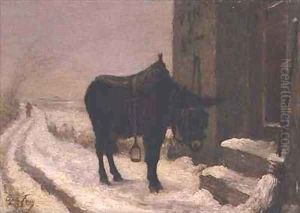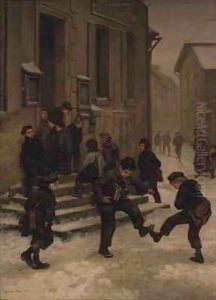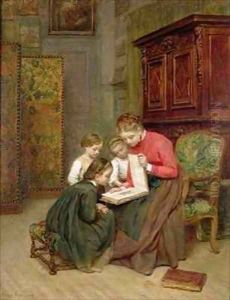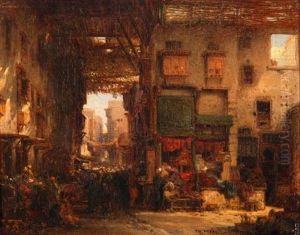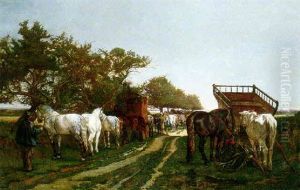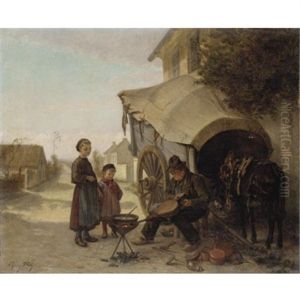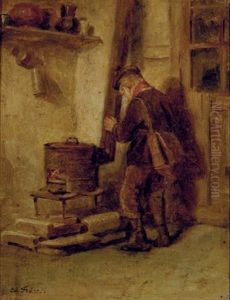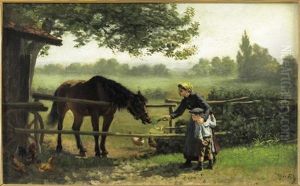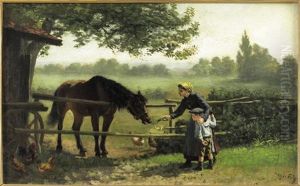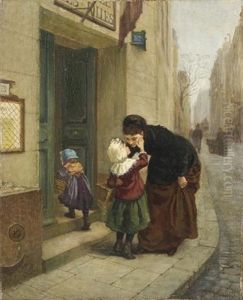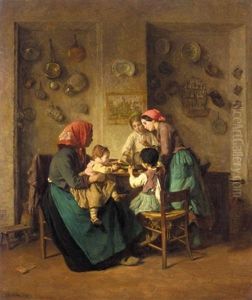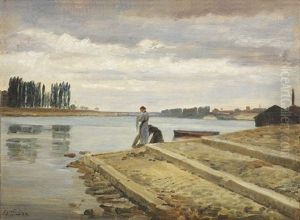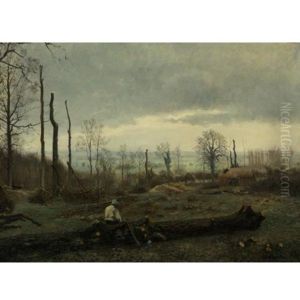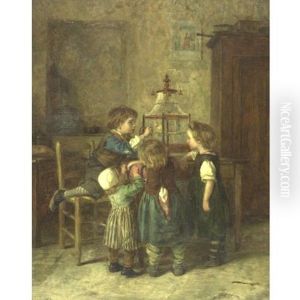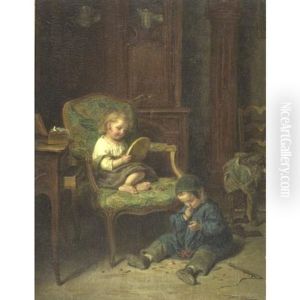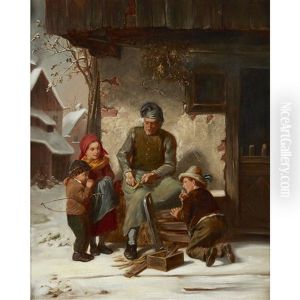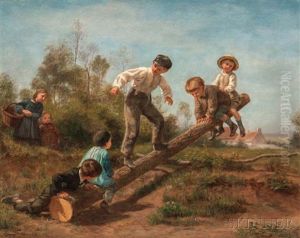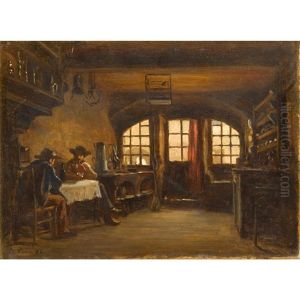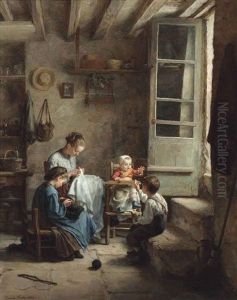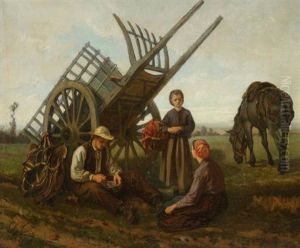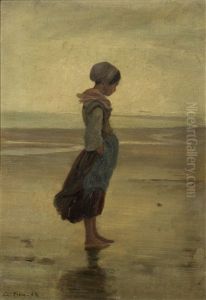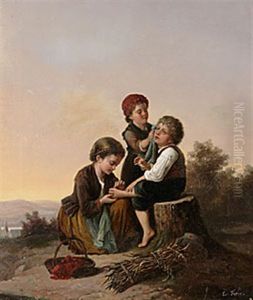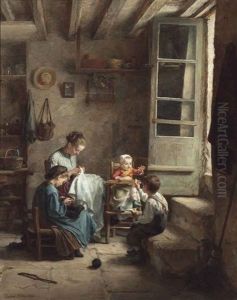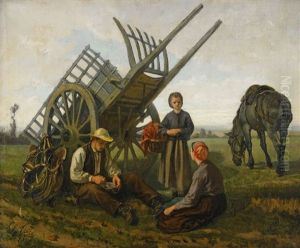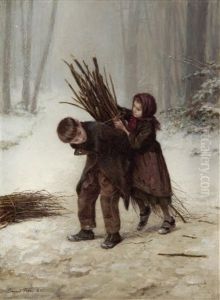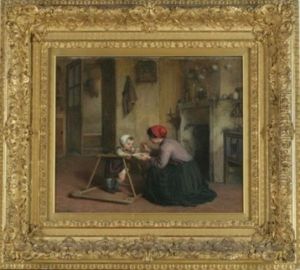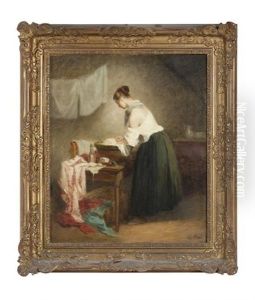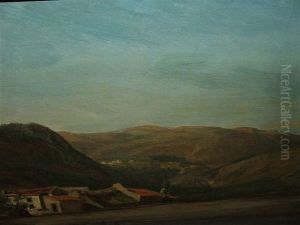Charles Edouard Frere Paintings
Charles Edouard Frere, born in 1837, was a French painter who specialized in genre scenes, capturing the everyday life of his time with a particular focus on children and domestic settings. He belonged to a family deeply entrenched in the world of art; his father, Pierre Edouard Frère (1819–1886), was also a celebrated painter, renowned for his detailed and affectionate depictions of peasant life. This environment undoubtedly influenced Charles Edouard, fostering his artistic development and honing his sensitivity towards the nuances of daily life and human relationships.
Frere's work is characterized by its warmth, delicate color palettes, and the gentle, often sentimental portrayal of his subjects. Throughout his career, he exhibited a consistent preference for scenes filled with warmth and intimacy, a reflection, perhaps, of the broader 19th-century European art movement that sought to find beauty and value in the mundane and ordinary. Despite the potential for his subject matter to veer into sentimentality, Frere's skillful composition and genuine affection for his subjects lent his paintings a sincerity and depth that resonated with his contemporaries.
He was active during a period rich in artistic evolution, with the Impressionist movement gaining momentum in France. However, Frere chose to stay true to a more traditional, academic style of painting, focusing on the clarity of line and form and the detailed representation of scenes. His adherence to this style did not diminish his popularity during his lifetime; on the contrary, his works were well-received, both in France and abroad, particularly in England and America, where his depictions of simple, idyllic domestic life held great appeal.
Charles Edouard Frere's legacy, while perhaps not as widely recognized today as some of his contemporaries, remains significant in the context of 19th-century French genre painting. His dedication to capturing the essence of everyday life provides a valuable glimpse into the domestic and social dynamics of his time, making his work not only artistically valuable but also of historical interest. He died in 1894, leaving behind a body of work that continues to be appreciated for its charm, technical skill, and insight into the human condition.
